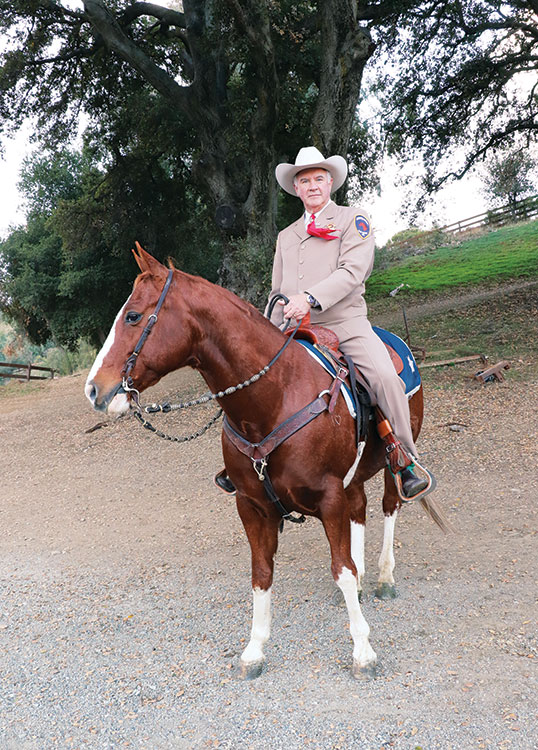
When one imagines the inner workings of NASA, images of scientists working on spaceships headed for strange new worlds and galaxies far, far away can come to mind.
Certainly not a part-time cowboy who works in aircraft technology full time. Enter Michael Hutnik ’76.
Hutnik works in the first A of NASA, its aeronautics division at the Ames Research Center in Mountainview, Calif. As a contracting officer, he handles negotiations with contractors and acts as a program manager. He also liaises directly with engineers to develop work requests for contractors. “The technology we work with is helping humanity and the United States,” he says.
After studying history at Colgate, Hutnik earned his JD from Santa Barbara College of Law in 1980. He practiced law for five years before serving in the U.S. Department of Defense as an administrative contracting officer in charge of three major weapons systems. Hutnik started at NASA in 1990 as part of the numerical aerodynamics simulation laboratory, which did high-speed computing. The team was the first to develop a teraflop machine, used to measure computer performance. Since that time, he’s supported several technical groups and now works with engineers to develop helicopter technology and advance aircraft design by handling the legal side of operations.
Besides working up contracts, Hutnik uses the technical skills he’s learned from years at NASA to aid in some special projects. “Back in the ’90s, there was a move to go into airship technology, blimps, and dirigibles,” he says. One such craft is the Aeros airship, for which Hutnik helped develop the statement of work and requirements with a handful of engineers. All airships need a heavy material called ballast, he says, usually made up of sand or water to improve stability. Because of this, ground crews have to tether airships down when they come in and let them take off. The Aeros airship was designed to have a system within itself that maintained its own ballast.
“It could land, and when they released it, it could take off and you didn’t necessarily have to have a ground crew,” he explains. “The purpose was to make an airship that could go into areas that weren’t developed and bring supplies.” Though it was experimental, and priorities in airship technology have changed, it was a valuable experience in which Hutnik could be hands-on with the scientific aspects of a project.
Remember the cowboy aspect? After a week at NASA, Hutnik enjoys powering down. “On the weekends, I’m a cowboy,” he says, “I work on a cattle ranch.” As a member of the Mounted Patrol of San Mateo County, a private equestrian organization originally formed as part of the sheriff’s department, he performs search and rescue operations along the coast, among other tasks. But, he doesn’t do the work alone: his quarter horse, Jake (named for the John Wayne film Big Jake), is along for the ride.
